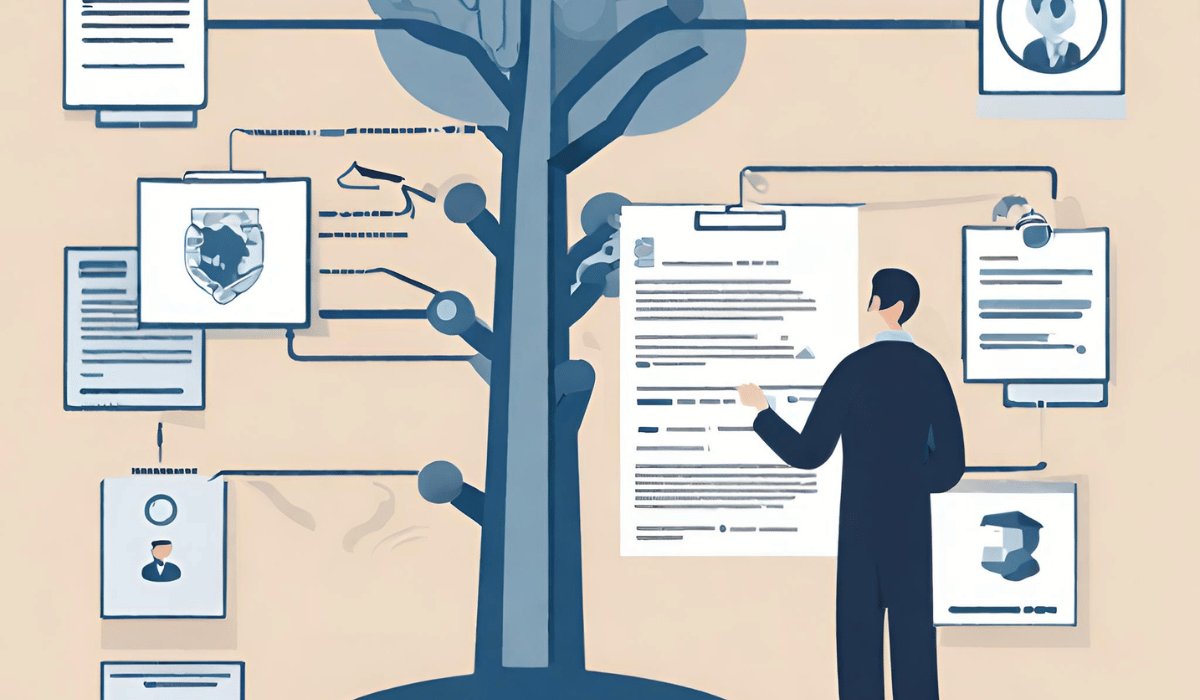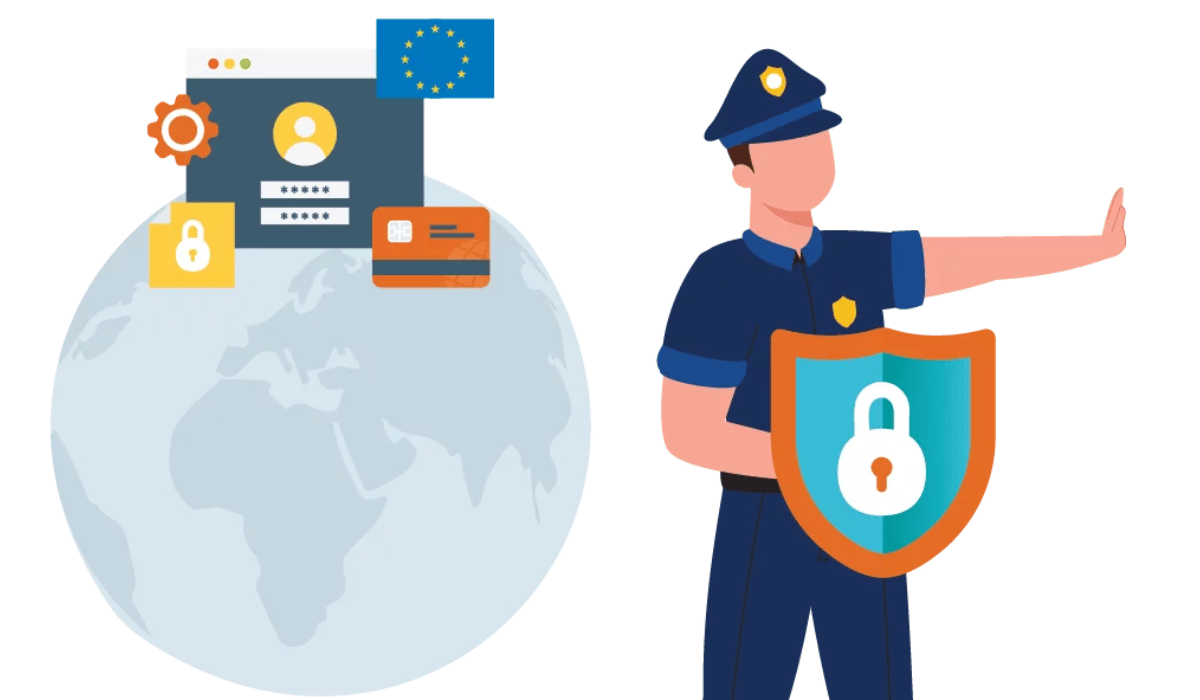Introduction
Definition of Data Privacy Impact Assessment (DPIA)
A Data Privacy Impact Assessment (DPIA) is an essential tool used to identify, assess, and mitigate privacy risks in data processing activities. It is a systematic process that helps organizations ensure compliance with data protection regulations such as the EU General Data Protection Regulation (GDPR). The DPIA provides a comprehensive analysis of privacy risks associated with the processing of personal data and outlines appropriate measures to address those risks.
The DPIA process typically involves several stages, including identifying the need for a DPIA, describing the information flows and processes involved in processing personal data, assessing the privacy risks posed by those processes, evaluating the proportionality and necessity of the processing activity, and devising strategies to mitigate any identified risks. The results of a DPIA can be used to inform decisions related to implementing or continuing with particular data processing activities.
Importance Of DPIA In Protecting Personal Data

One of the significant benefits of conducting a DPIA is that it helps organizations mitigate potential risks before they occur. The assessment enables companies to identify vulnerabilities in their systems, processes, or procedures that may pose threats to personal data privacy. By identifying these risks, organizations can take appropriate measures to address them effectively and prevent data breaches.
Moreover, DPIA plays an important role in building trust between customers and organizations. Today’s consumers are more conscious about their privacy than ever before. Conducting DPIAs reassures them that their information is safe and protected by reliable security measures. Ultimately, this leads to increased customer loyalty and retention as well as establishes a positive reputation for the organization as one committed to safeguarding people’s rights over their personal information.
Legal Requirements For Conducting DPIA

In accordance with the General Data Protection Regulation (GDPR), all organizations must carry out a DPIA before processing any personal data that poses a high risk to individual rights and freedoms. The GDPR has specified that the following types of processing require a DPIA: systematic and extensive profiling, large-scale processing of special categories of personal data, and systematic monitoring of public areas on a large scale.
DPIA Process
Step 1: Identify The Need For DPIA
To begin the process of conducting a Data Privacy Impact Assessment (DPIA), it is essential to identify the need for it. The first step towards this is determining if your organization processes personal data that could pose a risk to individuals’ fundamental rights and freedoms. This includes sensitive data, such as health information or financial details.
Consider whether there are any new processing activities being planned or changes to existing ones that could impact an individual’s privacy. For instance, implementing a new system for collecting customer data or sharing information with third-party vendors can warrant a DPIA.
Regulatory requirements may necessitate conducting DPIAs in certain circumstances. For example, under the General Data Protection Regulation (GDPR), organizations must carry out DPIAs when processing activities are likely to result in high risks for individuals’ rights and freedoms.
Step 2: Conduct A Data Inventory And Mapping
Data inventory and mapping involves creating an inventory of all personal data that is being processed and mapping out how it flows through each stage of the processing activity. The goal of this process is to identify any potential risks or vulnerabilities in the handling of personal data.
When conducting a data inventory, it’s essential to consider all types of personal information collected, including names, addresses, email addresses, financial information, medical records, and other sensitive details. It’s also crucial to identify who has access to this information and how it is stored or transmitted. With this information at hand, you can accurately assess potential risks associated with the collection and storage of such data.
Mapping out how personal data flows within your organization will help you understand where potential privacy threats lie. You can use flowcharts or diagrams to visualize how individual pieces of personal information are collected and handled throughout your processing activities’ lifecycle.
Step 3: Evaluate The Risks To Personal Data
Organizations must determine how likely each threat scenario is to occur based on its frequency of occurrence and what impacts could arise if it materializes. Evaluating the risks can enable organizations to take proactive measures such as implementing security controls or encryption techniques that can help mitigate identified risks accordingly.
Step 4: Identify Measures To Mitigate Risks
This step involves assessing the effectiveness of potential control measures and implementing them to minimize or eliminate identified risks. It requires considering how these measures will impact data subjects, as well as weighing up the benefits against any possible adverse effects.
Some common mitigation measures include establishing strict access controls, implementing encryption techniques to protect sensitive data, regularly auditing and monitoring systems for vulnerabilities or breaches, and providing regular training on data protection practices to employees. Additionally, organizations may consider adopting industry standards or best practices such as ISO/IEC 27001 or NIST Cybersecurity Framework.
Step 5: Consult With Stakeholders
Once you have identified the potential privacy risks and assessed their impact, it is time to involve stakeholders in the DPIA process. Stakeholders can include any individuals or groups who may be affected by the processing of personal data. This could include employees, customers, suppliers, partners, or regulatory bodies.
Consulting with stakeholders is important as it allows you to gather valuable insights into how personal data is being used and processed within your organization. It also helps you identify any areas where privacy risks may have been overlooked or underestimated. By engaging with stakeholders early on in the DPIA process, you are more likely to gain their support and buy-in for any data privacy measures that need to be implemented.
When consulting with stakeholders, communicate clearly why the DPIA is being conducted and what its objectives are. You should also provide opportunities for feedback and address any concerns they may have about how their personal data will be used going forward.
Step 6: Implement And Review DPIA
During implementation, it is essential to monitor the implemented measures to ensure that they are effective in mitigating identified risks. Any new changes or issues arising from implementation must be documented and evaluated against the original risk assessment. It is also crucial to ensure that data privacy principles such as transparency, accountability, accuracy, and confidentiality are maintained throughout this stage.
Once implementation is complete, a comprehensive review of the entire DPIA process should be conducted. The review helps in identifying any shortcomings during previous stages and improving future DPIAs’ efficiency.
DPIA Tools and Techniques
Data Protection Impact Assessment Template
While there isn’t a one-size-fits-all approach to conducting a DPIA, having a template can help streamline the process and ensure that all relevant factors are considered. A good DPIA template should include sections for describing the proposed processing activity, assessing its necessity and proportionality, identifying potential risks to individuals’ privacy rights, evaluating measures to mitigate those risks, and documenting the results of consultation with stakeholders.
Using a template can save time and effort during the DPIA process, but it’s important to remember that each assessment will be unique depending on factors such as the type of data being processed and the context of its use.
Privacy Risk Assessment Framework
A privacy risk assessment framework establishes a systematic approach to assess privacy risks, evaluate their potential impact on individuals, and develop appropriate controls to mitigate them. The framework includes various steps such as scoping the assessment, identifying personal data sources, assessing the likelihood and severity of risks, documenting findings, and implementing necessary measures.
A comprehensive privacy risk assessment framework can help organizations comply with legal requirements such as GDPR or CCPA by providing evidence of due diligence in protecting personal information. It also helps organizations build trust with customers by demonstrating their commitment to safeguarding sensitive data.
Privacy Impact Assessment (PIA) Software
PIA software simplifies the process of conducting a Privacy Impact Assessment (PIA), which is mandatory under many data protection laws like GDPR and CCPA. The software automates several aspects of the assessment such as data mapping, risk identification and mitigation, compliance tracking, and reporting.
Using PIA software not only saves time but also ensures accuracy in identifying privacy risks that could harm individuals. It helps organizations comply with legal requirements by providing a systematic approach to assess risks relating to personal information processing activities. Furthermore, PIA software provides transparency about how data is collected, processed, and shared within an organization.
Privacy by Design Framework
The Privacy by Design Framework is based on seven principles that help organizations ensure that their products and services are designed with privacy in mind. These principles include being proactive rather than reactive, ensuring end-to-end security, being transparent about data collection and use, providing options for user control, keeping data accurate and up to date, minimizing the amount of collected data, and retaining it only as long as necessary.
DPIA Best Practices
Engage a Data Protection Officer (DPO)

A DPO’s primary role is to ensure that the company complies with data protection laws and regulations. They are responsible for overseeing the organization’s data protection strategy, maintaining its policies and procedures, providing training to staff, conducting regular audits, and acting as a point of contact between the organization and regulatory authorities.
Engaging a DPO can be especially helpful when conducting a Data Privacy Impact Assessment (DPIA). A DPIA is an essential tool used by organizations to identify and mitigate potential privacy risks in their processes, systems, or services. The DPO can provide valuable insights into privacy concerns during this process and help ensure the assessment is thorough.
Involve All Stakeholders
By involving all stakeholders in the DPIA process, you can gather a diverse range of perspectives and insights that will help you identify potential risks and develop effective mitigation strategies. This collaborative approach can also increase buy-in from all parties involved, leading to greater accountability for protecting personal data and ensuring regulatory compliance.
Use A Team-Based Approach
This means assembling a team of experts from different departments within your organization to work together and assess the potential privacy risks associated with your data processing activities.
By bringing together experts in IT, legal, compliance, security, and other relevant areas, you can leverage their knowledge and expertise to identify potential privacy risks that may not be immediately apparent. In addition, taking a team-based approach ensures that everyone’s input is taken into consideration when making decisions about how to proceed with data processing activities.
Incorporate Privacy By Design
This approach ensures that privacy is considered from the very beginning and that it becomes an integral part of the system.
One way to incorporate privacy by design is through pseudonymization, which involves replacing identifiable information with artificial identifiers. This technique helps reduce the risk of unauthorized access to personal data while still allowing for its analysis. Another way is through access control mechanisms, which limit who can access and modify personal data.
Challenges In Conducting DPIA
Limited Resources And Budget
Limited resources and budget can pose a challenge when conducting a Data Privacy Impact Assessment (DPIA). To overcome this challenge, organizations may consider leveraging existing resources such as internal teams with expertise in data protection or collaborating with external consultants for specialized knowledge. It is important to ensure that these resources are utilized efficiently by identifying the most critical areas of focus within the DPIA process.
Technical Complexity
Technical complexity is a significant challenge in conducting a data privacy impact assessment (DPIA). The process requires the identification of all data processing activities and their potential risks to individuals’ privacy. This can be difficult when dealing with complex information systems that involve multiple parties, such as cloud-based services or third-party vendors. Moreover, the technical aspects of data processing can be challenging to understand, especially for non-technical stakeholders.
Legal Ambiguity
Legal ambiguity occurs because data protection laws and regulations vary by country, state, or region. As a result, companies may find it challenging to navigate the legal landscape and comply with all applicable laws. Furthermore, ambiguous terms in data privacy regulations make it even more difficult for organizations to interpret and apply them correctly.
In some instances, legal ambiguity can lead to serious consequences such as fines or lawsuits if a company fails to comply with the law. For example, GDPR requires businesses to implement necessary technical and organizational measures to protect personal data from unauthorized access or disclosure.
Cultural Resistance To Change
Cultural resistance to change can pose a significant challenge when conducting a Data Privacy Impact Assessment (DPIA). This is especially true in organizations where the established culture has long been one of lax data privacy practices. Such an organization may be resistant to any changes that would require them to adopt more stringent data privacy measures, even if such measures are necessary for compliance with regulatory requirements or protecting sensitive personal data.
Benefits of Conducting DPIA
Improved Data Protection
One of the primary objectives of conducting a Data Privacy Impact Assessment (DPIA) is to improve data protection. A DPIA aims to identify potential risks and vulnerabilities in the processing of personal data, enabling organizations to take appropriate measures to mitigate these risks. By conducting a DPIA, organizations can ensure that they comply with relevant laws and regulations related to data protection, such as GDPR.
Increased Stakeholder Trust
DPIA helps organizations to identify, assess and mitigate privacy risks associated with their data processing activities. By conducting a DPIA, organizations can demonstrate their commitment to protecting the privacy of individuals and show that they are complying with relevant regulations. This can increase stakeholder trust in the organization’s handling of personal information.
Cost Savings From Avoiding Data Breaches
Data breaches can result in significant financial losses for businesses, ranging from lost revenue to legal fees and fines. By conducting a thorough DPIA and implementing the necessary measures, companies can prevent these costs from arising.
Frequently Asked Questions (FAQs)
What Is The Difference Between DPIA and PIA?
DPIA is a type of PIA that focuses specifically on identifying and mitigating data protection risks associated with processing personal data. DPIA is mandatory under the General Data Protection Regulation (GDPR) for certain types of processing activities. It involves identifying potential risks to individuals’ rights and freedoms, evaluating the likelihood and severity of those risks, identifying measures to mitigate them, and documenting the whole process.
On the other hand, PIA is a broader concept that encompasses all types of privacy impacts across an organization’s operations. It involves evaluating how personal data is collected, processed, stored, and shared in a given context – be it a project or an entire organization – to identify potential risks or vulnerabilities related to privacy issues. The purpose of PIA is to evaluate whether these practices comply with regulatory requirements or organizational policies around privacy protection.
Who Should Conduct DPIA?
DPIA should be conducted by individuals or teams with appropriate knowledge and expertise in privacy and data protection laws. These individuals could be privacy professionals, legal counsel, IT security personnel, or any other expert within the organization who has adequate knowledge of the processing activities.
How Often Should DPIA Be Conducted?
Generally speaking, DPIA should be conducted at least once before beginning new processing activities or making significant changes to existing ones. Additionally, organizations may need to conduct DPIAs periodically if there are significant changes in technology or regulations that could impact their data protection practices.
What Are The Consequences Of Not Conducting DPIA?
Failure to conduct Data Privacy Impact Assessment (DPIA) can have severe consequences for organizations. For instance, they may be in violation of the General Data Protection Regulation (GDPR), which could result in significant financial penalties. This is because DPIA helps to identify privacy and security risks that an organization’s data processing activities may pose to individuals.
Moreover, not conducting DPIA exposes sensitive personal data to unauthorized access or loss, leading to breaches that could damage an organization’s reputation. The lack of a proper assessment also means that firms are less likely to understand and manage potential risks effectively. This translates into a higher likelihood of future data breaches occurring and further regulatory action being taken against them.
Conclusion
Conducting a Data Privacy Impact Assessment (DPIA) is crucial for any organization that handles personal data. It helps identify and mitigate potential privacy risks in advance, thereby ensuring compliance with data protection regulations such as GDPR.
Overall, by conducting a DPIA effectively and regularly reviewing it to account for changes in processing activities or risks over time, organizations can demonstrate their commitment to protecting individuals’ privacy rights while minimizing regulatory fines or reputational damage caused by non-compliance with data protection regulations.
